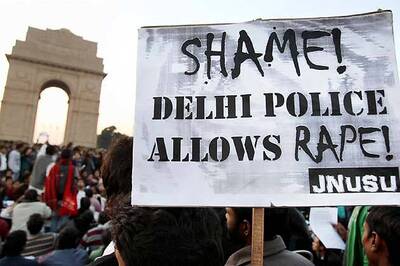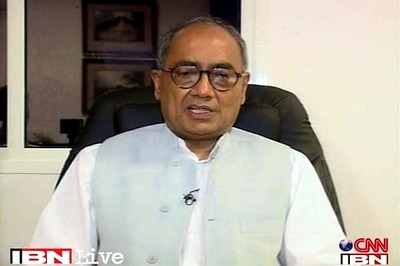
views
July 2023 has seen the hottest day ever recorded in earth’s history. Wildfires are raging across Canada, flooding the northern United States with smoke. Over in Europe, tourist attractions had to close down to keep tourists safe during the heatwave. Greece has had acres of olive groves go up in ash as hot and dry conditions have led to never seen before wildfires.
India too, saw her share of heat this year. But come July, India cools down with the monsoon. However, all is not well. Already we have seen flooding in Himachal Pradesh and Delhi saw its wettest July day in 40 years. We still have 3 more months of monsoon ahead of us. According to the latest findings, each degree of warming is strengthening the monsoon by 5%. It doesn’t sound like much, but when the world is expected to warm beyond the 2 degree threshold, it adds up.
Monsoon proof infrastructure isn’t just the need of the hour, it is what we need for the foreseeable future. The rapid pace of climate change means that we still don’t know what the new normal is, and we need to be prepared for the worst – particularly where toilets are concerned.
A flood causes immense property damage and displacement of people. These people no longer have a roof over their heads, and have to rely on public facilities when they have to go to the toilet. If these are damaged, it creates unacceptable risks to everybody’s health, safety and dignity. Not only that, damaged and flooded toilets cause human excrement (and the pathogens it contains) to spread out into our streets, our land and even our water supplies. This is why flood events are often followed by a surge in diarrhoeal disease.
Fortunately, creating monsoon-proof toilets doesn’t involve rocket science – in fact, we already possess the technology we need.
Ensuring Monsoon-Proofing for Public Toilets
To ensure that public toilets remain accessible and safe during the monsoon season, some of the measures that can be taken are:
Robust infrastructure design and construction:
The design and construction of public toilets should take into account the potential impact of the monsoon season.
- Proper site selection and elevation considerations: The location and height of public toilets should be chosen carefully to avoid low-lying or flood-prone areas. The toilets should also be elevated above the ground level to prevent water entry.
- Water-resistant materials and finishes: The materials and finishes used for public toilets should be water-resistant and durable. For example, concrete, brick, or metal can be used for the toilet structures, while ceramic, plastic, or stainless steel can be used for the toilet fixtures.
- Reinforced plumbing systems: The plumbing systems of public toilets should be reinforced and protected from water damage. For example, pipes should be buried underground or covered with waterproof materials. Faucets should have valves or taps that can be turned off when not in use.
Adequate drainage and flood management:
The drainage and flood management of public toilets should be adequate and effective.
- Installation of effective drainage systems: The drainage systems of public toilets should be able to handle the excess water from rainfall or flooding. For example, gutters, pipes, or channels should be installed to divert water away from the toilet buildings.
- Regular maintenance and cleaning of drains: The drains of public toilets should be regularly maintained and cleaned to prevent blockages or clogs. For example, debris, trash, or sediment should be removed from the drains periodically.
Accessibility features for individuals with disabilities:
The accessibility features of public toilets should cater to the needs of individuals with disabilities.
- Wide entrance doors and pathways for wheelchair access: The entrance doors and pathways of public toilets should be wide enough to accommodate wheelchair users. The doors should also have handles or knobs that are easy to operate.
- Accessible toilet fixtures and grab bars: The toilet fixtures and grab bars of public toilets should be accessible and user-friendly for individuals with disabilities. For example, the toilet seats should be at an appropriate height and have lids that can be lifted easily. The grab bars should be sturdy and well-positioned.
- Non-slip flooring and proper lighting: The flooring and lighting of public toilets should be non-slip and proper for safety and visibility. For example, the flooring should have anti-skid or textured surfaces. The lighting should be bright and evenly distributed.
Making the Case to Our Local Municipalities
This is where education and awareness matters. It is only when our public servants, policy makers and local communities are all aware of a viable solution that it is possible to ask for it, and make it happen.
Harpic, which is India’s leading brand in the lavatory care segment, is deeply aware of this gap. For three years now, it has partnered with News18 to create the Mission Swachhta aur Paani Initiative, which champions the cause of inclusive sanitation where everyone has access to clean toilets. It advocates equality for all genders, abilities, castes and classes and strongly believes that clean toilets are a shared responsibility.
Mission Swachhta aur Paani has also served as a valuable platform for enabling conversations between stakeholders from the government, NGOs and grassroots movements to come together and create sustainable solutions in the sphere of toilet access and sanitation for all. Additionally, Mission Swachhta aur Paani has created a reliable repository of information that empowers each of us to take actions that are within our power – be it educating our own children and those of our maids, lobbying local municipalities for monsoon proof toilets, or amplifying our messages on social media.
The Swachh Bharat Mission has shown us the power of combined action. Let’s use that momentum to create a society where all of us have dignity, safety and hygiene, irrespective of where we live, how much we earn, or what the weather looks like.
Join us here, to learn how you can make an impact.




















Comments
0 comment